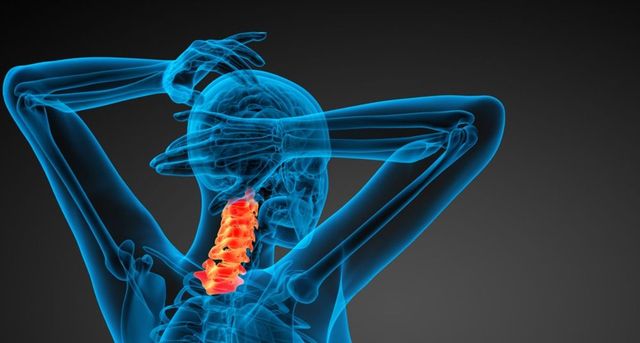Top Benefits of Back Decompression Therapy for Chronic Pain
Wiki Article
Discovering Spinal Decompression Techniques: What You Required to Know for Better Spine Treatment
Spinal decompression methods are necessary for people experiencing chronic back discomfort or spinal problems. These approaches range from non-invasive therapies to surgical choices, each designed to eliminate pressure on the spinal column. Recognizing these techniques is essential for effective spinal column treatment. Not all strategies are suitable for every condition. The nuances behind each method warrant closer assessment, as they can greatly influence healing and total wellness outcomes. What aspects should one consider before deciding?Comprehending Spinal Decompression
Although spinal decompression might sound complex, it fundamentally refers to a selection of techniques focused on easing pressure on the spine and surrounding nerves. Spinal Decompression. The back is an important structure that supports the body and secures essential neurological pathways. When compression happens, it can result in pain, discomfort, and minimized flexibility. Understanding spinal decompression includes recognizing the sources of this pressure, such as herniated discs, spinal constriction, or injury. By addressing these underlying concerns, decompression techniques look for to restore proper alignment and feature. This procedure can include both surgical and non-surgical approaches, tailored to individual patient demands. The objective is to improve the quality of life by easing discomfort, boosting pose, and assisting in better activity. As recognition of spinal health and wellness grows, the importance of recognizing spinal decompression comes to be progressively relevant for those looking for efficient therapy choicesCommon Spinal Decompression Strategies
Spinal decompression methods encompass a variety of methods designed to ease stress on the spinal column and its connected structures. These techniques can be broadly classified into surgical and non-surgical methods. Non-surgical approaches consist of spinal grip, where mild drawing pressures are used to the back, creating area in between vertebrae. This can reduce nerve compression and advertise healing. Chiropractic changes additionally fall under this group, concentrating on realigning the back to boost function.Surgical decompression techniques include treatments such as laminectomy, where a part of the vertebra is eliminated to eliminate stress on the spine or nerves. Discectomy, one more surgical option, requires the removal of herniated disc material. Furthermore, minimally intrusive strategies, like endoscopic discectomy, are obtaining popularity because of their decreased recuperation times. Each method serves a particular function and might be selected based on specific person requirements and the extent of their spinal condition.
Advantages of Spinal Decompression
When thinking about the different methods to managing spinal issues, the advantages of spinal decompression techniques end up being evident. These methods aim to alleviate stress on the spinal discs and nerves, which can ease pain and improve overall spinal wellness. By producing area in between vertebrae, decompression promotes boosted blood flow and nutrient circulation to the impacted areas, promoting recovery and recuperation.In addition, spinal decompression can aid recover the all-natural positioning of the spinal column, possibly minimizing the danger of future injuries. Individuals frequently report enhanced mobility and flexibility list below therapy, leading to a better top quality of life. The decrease in pressure can decrease signs and symptoms connected with conditions such as herniated discs, sciatic nerve pain, and spinal constriction, providing a Chiropractor non-invasive alternative to even more invasive treatments. Overall, spinal decompression strategies offer a variety of healing and physical benefits, making them a valuable part of substantial spine treatment.

Who Can Gain From Spinal Decompression?
Individuals struggling with chronic neck and back pain, herniated discs, or spinal stenosis might discover substantial relief via spinal decompression techniques. This non-invasive therapy can be especially beneficial for those experiencing nerve compression signs, such as tingling, tingling, or weak point in the limbs. Professional athletes recouping from injuries or individuals with degenerative disc illness might additionally consider spinal decompression as a practical alternative for pain management and enhanced wheelchair.Furthermore, candidates for spinal decompression frequently consist of those who have actually not reacted well to conventional treatments, such as drugs or physical therapy. It can likewise act as an alternative for clients seeking to prevent medical treatment. On the whole, spinal decompression strategies can supply a therapeutic option for different individuals dealing with spinal problems, assisting them restore a higher high quality of life and useful ability. Consulting a healthcare specialist is important to identify the viability of this treatment for certain conditions.
Factors to consider and Precautions for Spinal Decompression

The kind of spinal decompression strategy-- whether non-surgical or medical-- must align with the person's particular problem and general wellness condition. Monitoring throughout the procedure is crucial to address any type of adverse responses immediately. Patients have to likewise recognize that spinal decompression is not a one-size-fits-all service; a considerable treatment strategy might consist of physical treatment or lifestyle modifications to sustain recuperation. In general, adhering to these preventative measures can greatly improve the effectiveness of spinal decompression treatments and advertise perfect spinal column health and wellness.

Regularly Asked Inquiries
Just how Lengthy Does a Typical Spinal Decompression Session Last?
A typical spinal decompression session lasts between 30 to 45 mins. This period enables excellent treatment while making certain the person remains comfortable and obtains sufficient interest to their details spinal problems and requirements.Can Spinal Decompression Be Done in your home?
Spinal decompression can be performed at home through particular exercises and tools, such as inversion tables or lumbar braces. Consultation with a healthcare professional is suggested to ensure safety and security and performance in private cases.Is Spinal Decompression Painful?
Spinal decompression is generally not uncomfortable; nevertheless, individuals might experience light pain or pressure during the treatment. Discomfort levels can differ based upon the person's condition and the approach made use of for decompression.The Amount Of Sessions Are Generally Required for Relief?
Commonly, individuals might call for 6 to 10 sessions of spinal decompression therapy to experience considerable alleviation (Chiropractor). The precise number can differ based on individual conditions and feedbacks to treatment, requiring personalized assessment by medical care professionals.Are There Any Kind Of Age Restrictions for Spinal Decompression?
There are typically no rigorous age restrictions for spinal decompression therapy. Suitability might depend on individual wellness conditions and the particular method utilized, so examination with a medical care expert is suggested for individualized recommendations.Spinal decompression techniques are essential for people experiencing persistent back discomfort or spinal problems. Spinal decompression may sound complex, it fundamentally refers to a selection of techniques intended at easing pressure on the spinal cord and surrounding nerves. When taking into consideration the numerous techniques to handling spinal issues, the advantages of spinal decompression methods become evident. People experiencing from persistent back pain, herniated discs, or spinal constriction may find substantial relief through spinal decompression strategies. In general, spinal decompression techniques can provide a therapeutic alternative for various individuals encountering spinal problems, assisting them restore a higher top quality of life and practical capacity.
Report this wiki page